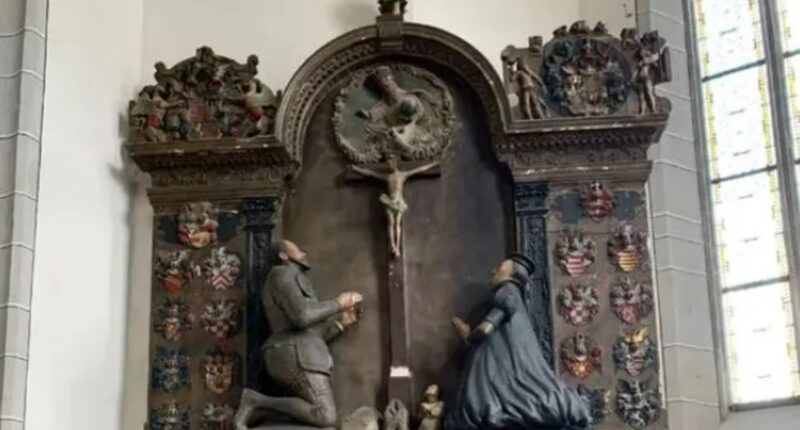A HUGE “fortune” of 400-year-old treasure has been found crammed inside the leg of a statue in a church.
During restoration work on a well-known Gothic church in Germany, workers stumbled upon four bags filled with golden coins hidden inside a stone cavity.



Historians think the bounty was hidden from Swedish looters who frequently plundered the region during the Thirty Years’ War in the 17th century.
Ulf Dräger, curator and head of the State Coin Cabinet in Germany, told Live Science the discovery was the latest chapter in an “incredibly story”.
The trove of 816 coins was first uncovered at St Andrews Church in Eisleben, central-east Germany, in 2022, but kept under wraps until recently.
The church is famous for being the place where Martin Luther, a significant figure in the Protestant reformation, delivered his last sermons in 1546.
The coins were stashed around 100 years later by someone who needed to hide their treasure.
They pushed four “bulging purses” into a cavity in the leg of a sandstone statue that was part of a grave for a count and countess, Dräger said.
The hoard included a rare “golden angel” coin, gold ducats, various silver coins and hundreds of ancient pennies.
Dräger said: “It is nothing short of a miracle that the treasure did not come to light sooner.”
He explained it will take time for coin experts to assess the stash’s value, but “at the moment, I can only say that it is a huge fortune.
“It is much more than a craftsman could earn in a year,” Dräger said.
The most valuable coins were wrapped in paper with labels indicating they belonged to the church treasury.
But Dräger says they were not the result of the church’s Sunday collections.


Instead, the cash is “the collected income from special services provided by the pastors,” such as weddings, baptisms and funerals.
Pastors also collected money from “chair fees,” when would pay for the best seats in church, he said.
During the Thirty Years’ War Swedish troops plundered the area around Eisleben as often as every week, so anything valuable had to be concealed.
Locals were forced to give the Swedish troops accomodation and food, and pay them vast sums of money, Dräger sai.
He added: “Eisleben lost around half of its population between 1628 and 1650.
“[It was] a picture of constant war horror.”
What was the Thirty Years’ War?
THE Thirty Years’ War was a series of highly-destructive conflicts fought in Europe between 1618 and 1648.
The fighting was primarily between Protestant and Catholic states.
The Protestant Reformation began 1517, which led to a build up of religious tensions around the continent.
Ferdinand II became the emperor of Rome in 1619 and attempted to force Roman Catholicism on his subjects across the empire.
The war began as a religious conflict, but became more political as foreign powers intervened.
It ultimately sucked in many of the great powers of Europe, including Spain, Austria, England, Denmark, the Dutch Republic, and Sweden.
It resulted in millions of deaths through fighting as well as widespread famine and disease.
The war ended with the Peace of Westphalia in 1648, which established religious and political boundaries in Europe.

















